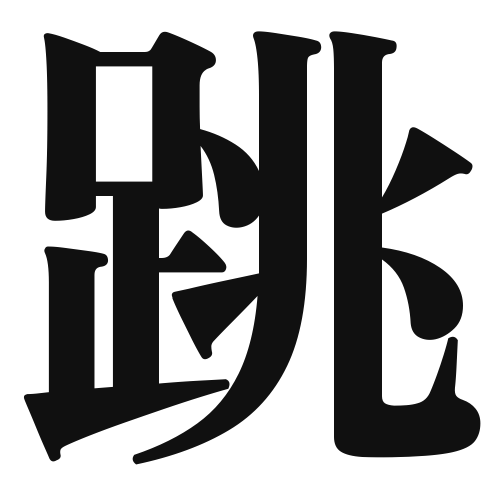1. Overview of Meaning
The kanji “跳” (pronounced “to” or “hiyoru”) means “to jump” or “to leap.” It conveys the action of springing off the ground or moving upward with force.
2. Formation and Radical
The kanji “跳” is a phonetic-ideographic character (形声文字), which means it combines both meaning and sound elements. The left part, “足” (meaning “foot”), indicates the action related to movement, while the right part, “跳” (pronounced “to”), provides the phonetic component.
The radical of “跳” is “足,” which relates to feet or movement, emphasizing the action of jumping.
3. Examples of Usage
Common words and phrases that include “跳” are:
- 跳ねる (haneru) – to jump
- 跳躍 (chōyaku) – leap or jump
Example sentence in daily conversation:
子供たちは公園で元気に跳ねている。
(The children are happily jumping in the park.)
4. Synonyms and Antonyms
Similar kanji with related meanings include:
- 飛 (hi) – to fly, which implies a more horizontal movement compared to “跳,” which is more vertical.
Antonyms include:
- 落ちる (ochiru) – to fall, which indicates a downward movement as opposed to jumping upward.
5. Cultural and Historical Background
The kanji “跳” is often associated with Japanese culture, particularly in traditional sports and festivals where jumping is a key element, such as in “Kagura” (a type of Shinto music and dance).
Proverbs and idiomatic expressions that include “跳” are less common, but the concept of jumping is often used metaphorically to describe taking bold actions or leaps of faith in life.
